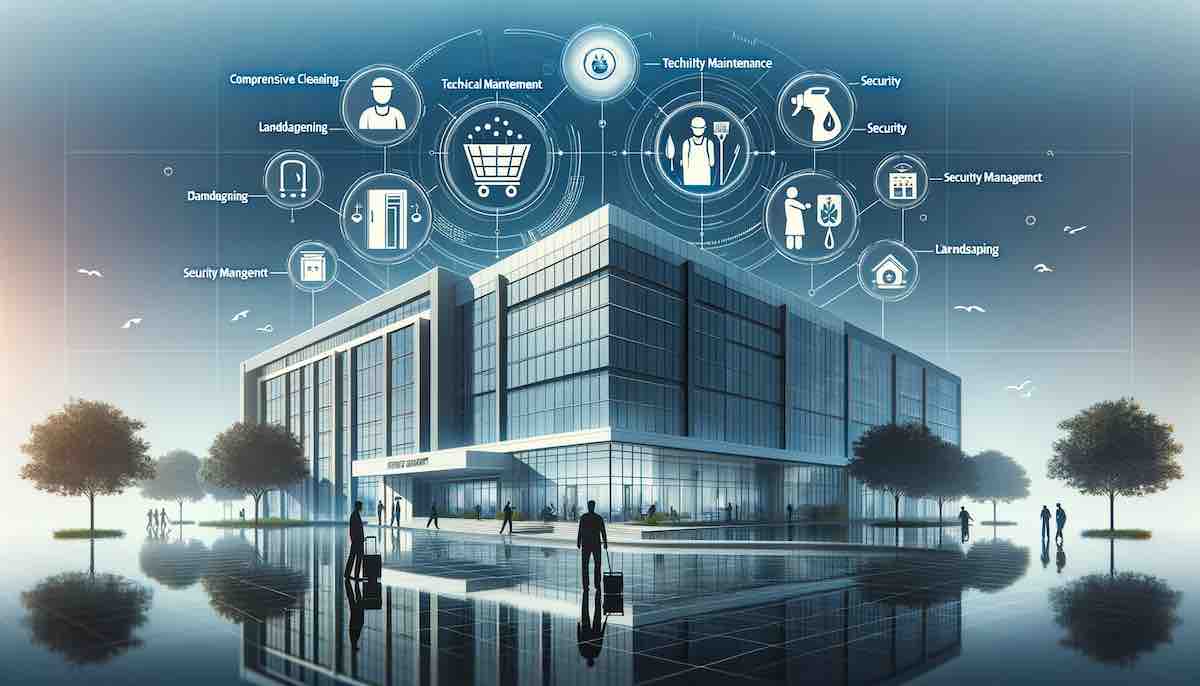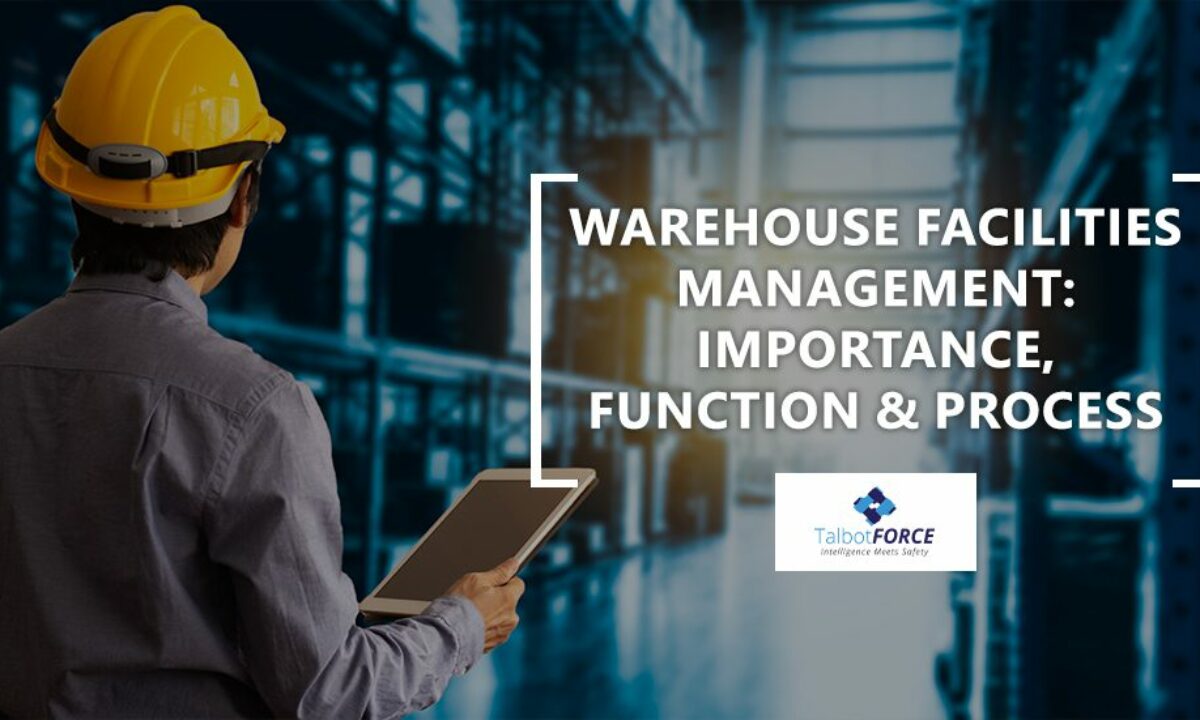Key Methods for Effective Facility Management in Large Organizations
Key Methods for Effective Facility Management in Large Organizations
Blog Article
The Crucial Overview to Center Administration: Techniques for Success
Facility administration plays a vital duty in the overall success of a company, offering as the backbone that supports productivity, security, and performance. The subtleties of effective facility monitoring extend beyond mere logistics and call for an extensive understanding of both qualitative and measurable metrics.
Understanding Facility Administration
What makes up efficient center monitoring? Efficient center monitoring incorporates the control of various organizational features to make certain that built settings are risk-free, reliable, and for performance. Facility Management. It integrates the principles of architecture, engineering, and company management to create a seamless functional circulation within a company
Key elements of facility management consist of area planning, upkeep administration, and compliance with health and wellness regulations. Room preparation concentrates on optimizing the use of physical sources to sustain business goals, while upkeep management guarantees that facilities are kept in optimal condition, taking full advantage of lifespan and reducing functional expenses. Compliance with lawful and governing standards is critical, as it safeguards the company against possible responsibilities and improves its credibility.
Furthermore, efficient facility monitoring counts on the tactical use innovation, such as Building Monitoring Solution (BMS) and Computer-Aided Center Management (CAFM) tools. These modern technologies help with real-time monitoring of building systems and improve upkeep procedures. Ultimately, a thorough method to facility management not only advertises operational performance yet additionally fosters a favorable environment for site visitors and workers alike, driving overall organizational success.
Trick Techniques for Optimization
Maximizing center administration needs a calculated method that aligns operational practices with organizational purposes. To achieve this, the very first vital technique is the application of integrated technical solutions. Utilizing sophisticated software systems enables for real-time surveillance of facility procedures, promoting data-driven decision-making and improving overall efficiency.
Second of all, routine evaluations of center efficiency are important. Carrying out routine evaluations and audits allows center supervisors to identify areas that need enhancement, making sure that sources are alloted efficiently. This aggressive technique assists in lessening downtime and boosting service shipment.
An additional crucial technique is promoting partnership across divisions. By motivating open interaction in between groups, center supervisors can much better straighten their strategies with business goals, leading to improved operational synergy. Additionally, involving team in training programs promotes a culture of accountability and improves their capability to contribute to optimization efforts.
Enhancing Safety Protocols
Strengthening security methods is vital for producing a safe and secure environment within facilities. An extensive security protocol not just shields staff members and visitors yet also improves operational efficiency. To achieve this, facility supervisors need to conduct regular risk assessments to determine prospective hazards and ensure that appropriate steps are in place.
Training and education and learning are vital parts of efficient safety methods - Facility Management. Workers should obtain recurring training in emergency procedures, tools handling, and personal safety procedures. Normal drills, such as fire discharges or lockdown procedures, foster knowledge and preparedness amongst personnel
Additionally, clear communication networks need to be established to report security concerns immediately. This includes creating an accessible system for employees to articulate potential risks or incidents without concern of reprisal. Leveraging modern technology can enhance safety actions; for example, executing security systems and access controls helps keep an eye on facility activities and restrict unauthorized entrance.
Last but not least, compliance with regional guidelines and market criteria is non-negotiable. Regular audits and evaluations of security methods ensure alignment with existing laws and best methods. By prioritizing these methods, center supervisors can grow a society of safety and security that protects all stakeholders and eventually adds to the company's success.
Improving Work Environment Setting

Ergonomic considerations are vital to reduce physical strain and discomfort. Facility Management. This involves offering adjustable furniture, appropriate lights, and ample room for activity. These modifications can cause minimized absenteeism and boosted task fulfillment
Appearances play an essential duty fit the work environment environment. Using color psychology, natural lights, and plant can promote a welcoming and stimulating environment. Attentively created areas can increase creativity and improve total health.
Additionally, motivating employee involvement with inclusive decision-making processes can boost the sense of ownership and belonging. Collecting comments on workplace renovations and including workers in the design procedure can cause a more customized atmosphere that fulfills their demands.
Finally, promoting wellness initiatives, such as health cares and relaxation rooms, can additionally contribute to an encouraging work environment culture. By focusing on these methods, facility supervisors can effectively enhance the office setting, driving both staff more info member contentment and organizational success.
Gauging Success in Facilities
Measuring success in center management calls for an extensive approach that reviews both qualitative and measurable metrics. Quantitative metrics commonly include essential performance indications (KPIs) such as space use rates, energy intake, maintenance expenses, and get more info occupancy degrees. These metrics give a clear image of functional efficiency and monetary efficiency, permitting facility supervisors to identify areas for enhancement and standard against market criteria.
Qualitative metrics, on the other hand, concentrate on customer complete satisfaction and worker involvement. Surveys and comments systems can gauge exactly how well the centers fulfill the needs of residents, assisting to analyze the overall office setting. This aspect is important, click here as a pleased labor force is often linked to boosted productivity and retention prices.
To efficiently gauge success, facility managers need to also consider integrating innovation, such as developing administration systems and information analytics devices, to collect and evaluate relevant data. Frequently examining both collections of metrics enables a much more balanced sight of performance and informs tactical decisions. Ultimately, a successful facility administration technique hinges on a commitment to constant improvement, guaranteeing that both operational effectiveness and individual fulfillment are focused on.
Final Thought

Facility management plays a crucial function in the total success of an organization, offering as the backbone that supports safety and security, efficiency, and efficiency.Key elements of facility monitoring consist of space planning, upkeep management, and compliance with health and wellness and security laws.Furthermore, efficient facility administration relies on the tactical usage of technology, such as Building Administration Equipment (BMS) and Computer-Aided Center Monitoring (CAFM) tools. Eventually, a thorough approach to facility management not only promotes operational effectiveness however additionally fosters a positive environment for visitors and employees alike, driving overall business success.
Ultimately, a successful center monitoring strategy pivots on a dedication to continual enhancement, ensuring that both operational efficiencies and user satisfaction are focused on.
Report this page